
Thomas Heyward Jr. was an American Founding Father, lawyer, jurist, and politician. Heyward was active politically during the Revolutionary Era. As a member of the Continental Congress representing South Carolina, he signed the Declaration of Independence and Articles of Confederation. Heyward's imprisonment in Florida by the British for nearly a year and the loss of a considerable number of slaves led to his being proclaimed a martyr of the revolution.
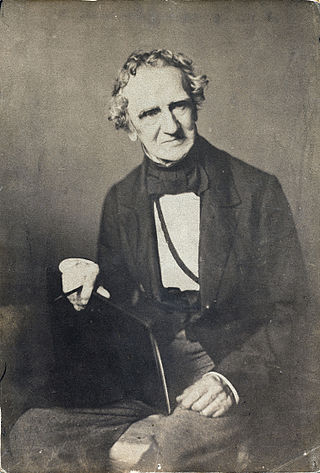
Thomas Sully was an American portrait painter in the United States. Born in Great Britain, he lived most of his life in Philadelphia, Pennsylvania. He painted in the style of Thomas Lawrence. His subjects included national political leaders such as United States presidents: Thomas Jefferson, John Quincy Adams, and Andrew Jackson, Revolutionary War hero General Marquis de Lafayette, and many leading musicians and composers. In addition to portraits of wealthy patrons, he painted landscapes and historical pieces such as the 1819 The Passage of the Delaware. His work was adapted for use on United States coinage.
Ladson is a surname. Notable people with the surname include:

James Hamilton Jr. was an American lawyer and politician. He represented South Carolina in the U.S. Congress (1822–1829) and served as its 53rd governor (1830–1832). Prior to that he achieved widespread recognition and public approval for his actions as Intendant (mayor) of the city of Charleston, South Carolina in 1822, during the period when plans for a slave rising were revealed. As governor, he led the state during the Nullification Crisis of 1832, at the peak of his power.

Robert Young Hayne was an American lawyer, planter and politician. He served in the United States Senate from 1823 to 1832, as Governor of South Carolina 1832–1834, and as Mayor of Charleston 1836–1837. As Senator and Governor, he was a leading figure in the Nullification Crisis and, along with John C. Calhoun and James Hamilton Jr., a vocal proponent of the doctrines of states' rights, compact theory, and nullification; his 1830 debate in the Senate with Daniel Webster is considered a defining episode in the constitutional crisis which precipitated the American Civil War.
Henrietta de Beaulieu Dering Johnston was a pastelist of uncertain origin active in the English colonies in North America from approximately 1708 until her death. She is both the earliest recorded female artist and the first known pastelist working in the English colonies, and is the first portraitist known to have worked in what would become the southern United States.

Robert Smalls was an American politician, publisher, businessman, and maritime pilot. Born into slavery in Beaufort, South Carolina, he freed himself, his crew, and their families during the American Civil War by commandeering a Confederate transport ship, CSS Planter, in Charleston harbor, on May 13, 1862, and sailing it from the Confederate-controlled waters of the harbor to the U.S. blockade that surrounded it. He then piloted the ship to the Union-controlled enclave in Beaufort–Port Royal–Hilton Head area, where it became a Union warship. His example and persuasion helped convince President Abraham Lincoln to accept African-American soldiers into the Union Army.

The Gibbes Museum of Art, formerly known as the Gibbes Art Gallery, is an art museum in Charleston, South Carolina. Established as the Carolina Art Association in 1858, the museum moved into a new Beaux Arts building at 135 Meeting Street, in the Charleston Historic District, in 1905. The Gibbes houses a premier collection of over 10,000 works of fine art, principally American works, many with a connection to Charleston or the South.
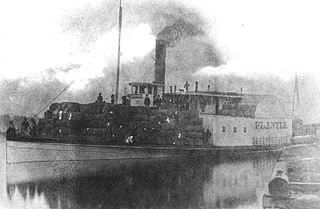
USS Planter was a steamer taken over by Robert Smalls, a Southern slave and ship's pilot who steered the ship past Confederate defenses and surrendered it to Union Navy forces on 13 May 1862 during the American Civil War. The episode is missing from Scharf's History of the Confederate States Navy, except for one sentence saying that Smalls "stole" the ship.

Mary Roberts was an American miniaturist active in Charleston, South Carolina in the 1740s and 1750s. One of the earliest American miniaturists, and the first woman recorded as working in the medium in the American colonies, she is also believed to have painted the first watercolor-on-ivory miniature in the colonies.
Jeremiah Theus was a Swiss-born American painter, primarily of portraits. He was active mainly around Charleston, South Carolina, in which city he remained almost without competition for the bulk of his career.
Charles Fraser, was an American artist best known for his miniatures of prominent American figures.

James Henry Ladson was an American politician, wealthy plantation owner from Charles Town and officer of the American Revolution. He served as the Lieutenant Governor of South Carolina from 1792 to 1794, and was a member of the South Carolina state Senate from 1800 to 1804.
James Henry Ladson (1795–1868) was an American planter and businessman from Charleston, South Carolina. He was the owner of James H. Ladson & Co., a major Charleston firm that was active in the rice and cotton business, and owned over 200 slaves. He was also the Danish Consul in South Carolina, a director of the State Bank and held numerous other business, church and civic offices. James H. Ladson was a strong proponent of slavery and especially the use of religion to maintain discipline among the slaves. He and other members of the Charleston planter and merchant elite played a key role in launching the American Civil War. Among Ladson's descendants is Ursula von der Leyen, who briefly lived under the alias Rose Ladson.
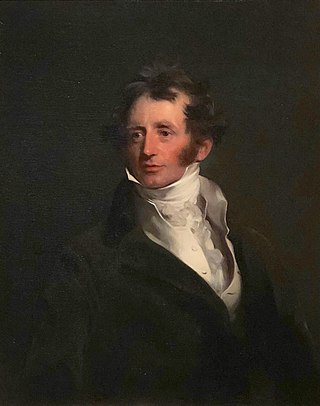
Robert Gilmor Jr. (1774–1848) was an American merchant, shipowner, East-India importer and art collector from Baltimore. He was regarded as "one [of] the most significant art collectors and patrons in the United States before 1850." His collection included art, antiquities, rare books, autographs, coins, stamps, rocks, and minerals. His collection included 14th century Old Masters and 17th century Dutch and Flemish works.
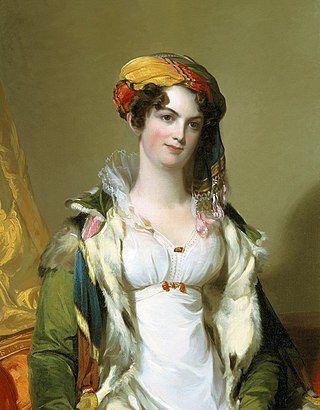
The Ladson family is an American family of English descent that belonged to the planter and merchant elite of Charleston, South Carolina from the late 17th century. The family were among the first handful of European settlers of the English colony of Carolina in the 1670s, where the family quickly became part of the American gentry. The Ladson were large plantation owners and wealthy merchants in Charleston, and owned hundreds of slaves until slavery was abolished in 1865. James Ladson served in the American Revolutionary War and became lieutenant-governor of South Carolina, while his son James H. Ladson was part of the Charleston oligarchy that was influential in launching the American Civil War. The President of the European Commission Ursula von der Leyen, who lived under the name Rose Ladson in her 20s, is a descendant of the family through her American great-grandmother.

Maurie D. McInnis is an American author and cultural historian. She currently serves as the 6th president of Stony Brook University.
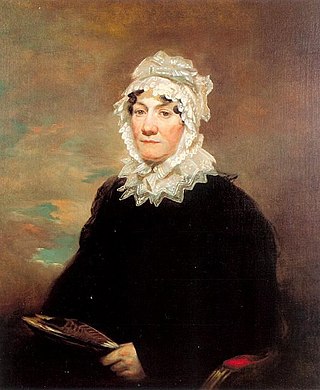
Judith Smith Ladson was an American heiress and socialite who served as the Second Lady of South Carolina. A member of the colonial planter class, she was the daughter of the slave trader Benjamin Smith and the wife of the politician James Ladson, who served as Lieutenant Governor of South Carolina. Through her marriage, she was a member of the Ladson family, one of Charleston's most prominent families.

Elizabeth Wragg Manigault was an American socialite who was prominent figure in colonial South Carolinian society. She was the wife of Peter Manigault, who served as Speaker of the South Carolina House of Representatives and was one of the wealthiest people in British North America.

Judith DuBose was a Colonial American heiress. Born into a prominent French Huguenot family of planters, DuBose married Joseph Wragg, a prominent slave trader in British North America.
















